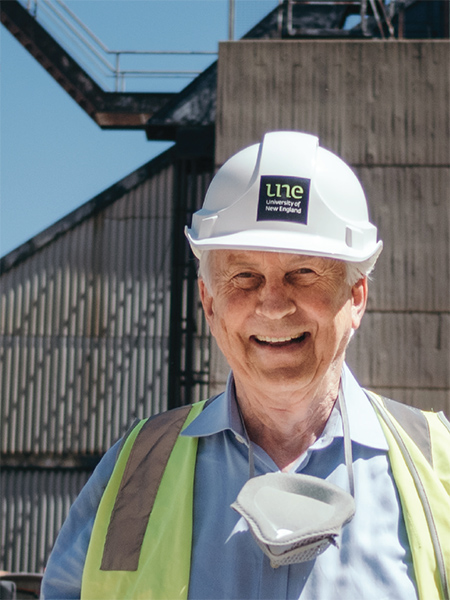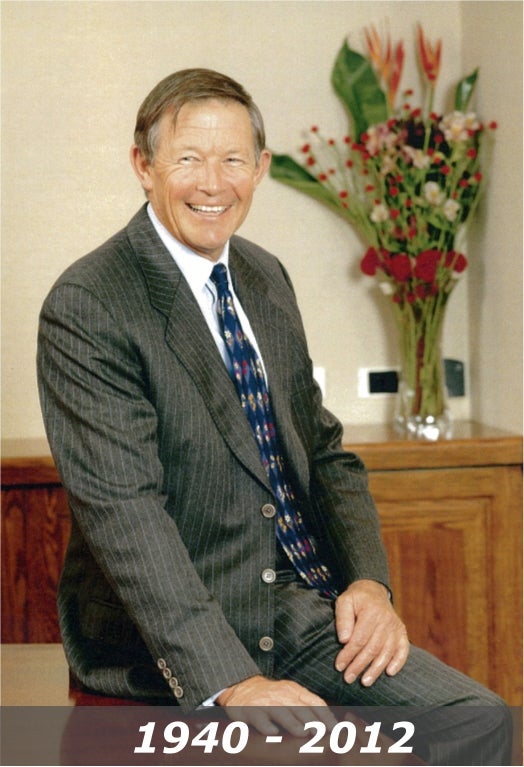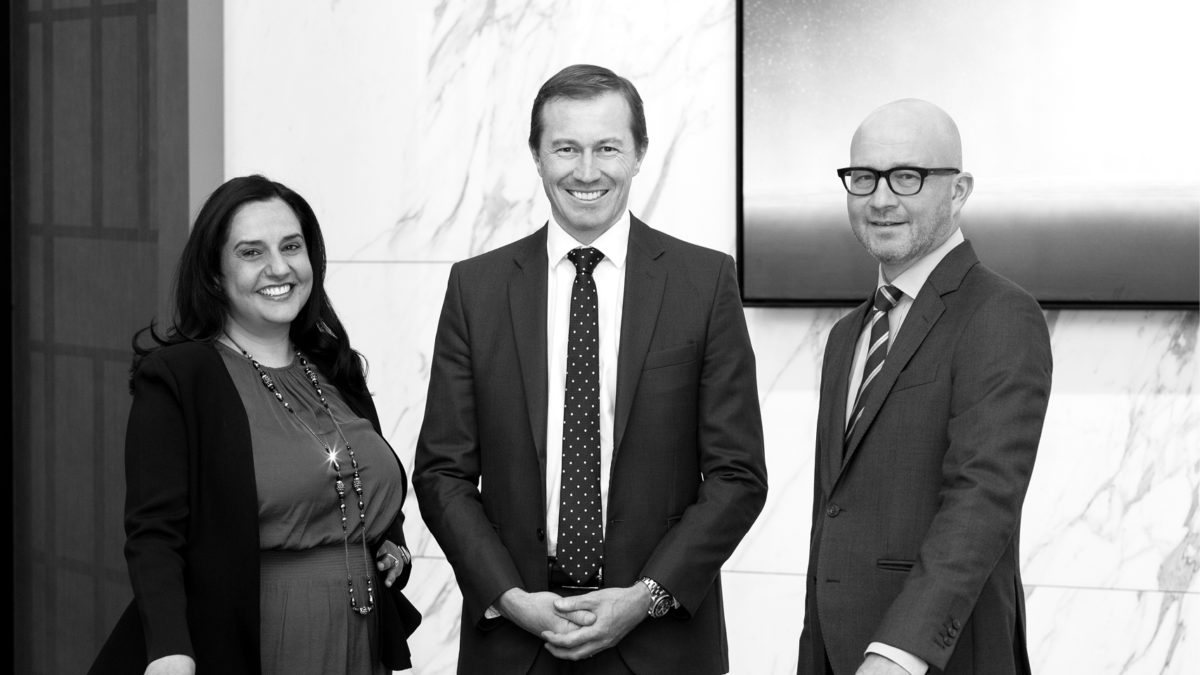The generational change at Maple-Brown Abbott
After nearly 20 years at Maple-Brown Abbott Ltd, Australia’s quintessential home-grown boutique fund manager, Dougal Maple-Brown doesn’t get too carried away with what for the past couple of months has been looking like, at last, a rotation in the style cycle.
Dougal, a lawyer by background who moved into investment banking with Baring Bros, where he worked on the sale of MLC by Lend Lease to NAB, joined the firm started by his late father, Robert, in 2001.
He says: “When I arrived, we had a $15 billion book [in Australian equities]. It’s now just over $ 3 billion. But we’ve become a three-legged stool. If we hadn’t launched the Asia and infrastructure businesses, the business would look very different.”

Maple-Brown Abbott (MBA) is also Australia’s quintessential value manager in broad-market equities, which has been riding the style cycle since inception in 1984. Value has underperformed for nearly 12 years, give or take a couple of brief flirtations with a rotation away from large-cap growth.
The most recent of these was in October, when value stocks avoided the so-called ‘October effect’ which knocked the big growth stocks and therefore the whole market until a recovery in November, which, at 10.7 per cent for the S&P 500 was the best November since 1928.
But long-term managers know their history. The following year, November 1929, was the worst November in history, the Great Crash and the start of the Great Depression. “I’m not going to get excited about one month’s performance,” Dougal says. “One thing is clear: there is a massive shortage of value among the big pension funds.”
While proud of the firm’s heritage, particularly sons Dougal and Andrew, they and the other shareholders are looking to continue MBA’s evolution through style cycles, market fashions, good times and bad. Sophia Rahmani, who became just the fourth CEO last year, says: “My role is to set strategy and work with the team so we’re around for the next 36 years. It’s an inter-generational change.”
One of the changes on the drawing boards is looking at establishing a more sustainable staff share scheme, rather than various schemes which have risen up and fallen away over the years. “We’re looking at what should be the best system to remunerate everyone. Long-term incentives are important,” she says.
Since Robert’s death in 2012, the share registry has also evolved but remained about 75 per cent within the Maple-Brown family. The other 25 per cent is split between former CEO and recently retired chairman John Kightley, and co-founder Chris Abbott, who first met Robert at Rothschild in the 1970s. The other three CEOs have been Robert, Kightley and Garth Rossler, who has concentrated on the role of CIO since Rahmani joined last year.
In terms of diversification, representing Dougal’s three-legged stool, the big two additions to the core Australian equities strategy have been an Asia ex-Japan strategy in 2003 and a big stake in and close association with Andrew Maple-Brown’s Global Listed Infrastructure, which he formed in 2012 with three co-founders, Justin Lannen, Steven Kempler and Lachlan Pike.
The ‘three legs’ account for nearly $10 billion of the $10.4 billion under management, as at November 30. The rest is made up of the diversified investment trust, a pooled superannuation trust and some private client business. Most of the money invested in the Asia fund is sourced from overseas, just as most of the money invested in the Australian equity fund is from Australia. The infrastructure fund has more of a mix of the two.
The Asia ex-Japan equities strategy has about $1.63 billion under management, headed by Geoffrey Bazzan, and perhaps the largest team of Asian specialist analysts and portfolio managers in Australia – a team of nine.

From a business perspective, a long-time problem for Asia ex-Japan managers is that most institutional investors have preferred a broader emerging markets portfolio. This is as much the case, or perhaps even more, for the big Australian super funds, despite our keener knowledge of the Asia Pacific region and fewer, if any, links with the rest of the developing world.
Dougal says: “We have been looking at evolving Asia into a GEM (global emerging markets) strategy for a while. For every 10 GEM searches there’s only one Asia search.” When MBA launched the strategy, Asia ex-Japan made up about half of the MSCI emerging markets index. Now it’s about 80 per cent and will go higher when more Chinese (China-A) shares are allowed to enter the index.
While the future groupings of emerging markets strategies are difficult to predict – remember the popularity of the BRICs (Brazil, Russia, India and China) 10 or so years ago – it is possible that Asian mandates may exclude China at some stage, as they did when Japan was at its peak market cap in the 1990s.
Rahmani describes the Asia team as one of the firm’s “hidden gems”. She met Andrew Maple-Brown when the two were at Macquarie. Andrew spent 11 years there, in Sydney and New York, the second half of which he was a portfolio manager with the global listed infrastructure team.
Rahmani, also a lawyer and then investment banker by background, spent seven years at Macquarie until 2013, including a year in the Philadelphia office. She then moved to Janus Henderson as regional chief operating officer in Sydney and Singapore prior to MBA. Last year, the firm outsourced their administration to Northern Trust, although the decision was taken before her arrival, and early this year beefed up the sales effort with the recruitment of Duncan Hodnett as head of global distribution.
The listed infrastructure business has also been well staffed growing to a team of eight as it added to its FUM. “We want to make sure we get the best ideas,” Andrew says. “Australians are very good at managing infrastructure. We estimate that in our listed space about half of the global money is managed out of Sydney. But most of the funds we manage are offshore.”
Global Listed Infrastructure defines the broad listed market as consisting of about 1,100 stocks, which the manager cuts down to its own investable universe of 400 for ranking according to the volatility of cashflow and their linkage to inflation. The companies with the strongest combination go up to a focussed list of 110-odd stocks from which the concentrated portfolio of about 25 is selected.
Although big super funds can be reluctant to invest in listed infrastructure due to their preference for more control in the unlisted space and ability to co-invest, there is no shortage of wholesale and retail investors who appreciate the liquidity and, in some cases, outperformance.
There’s an apparent anomaly with infrastructure, which Andrew’s colleague, Steven Kempler, has published a paper on, whereby listed assets will often trade at a premium to unlisted – even when the underlying assets are the same – which flies in the face of the norm that the converse should be true.
Robert’s legacy for the 61 employees of MBA – 60 in Sydney and one in Brisbane – is probably the firm’s culture. Rahmani is aware of this, of the history and special nature of the firm, and says: “We think and talk a lot about our culture. We have a very low staff turnover, of about 3 per cent compared with an industry average of 10-11 per cent. The cultural piece is important for that and the recognition that the investment teams are our assets. We are investment and client service led, not distribution led.”
Back in the 1990s, there were three associations which represented fund managers: AIMA (Australian Investment Management Association) for ‘manufacturers’, FSA for retail managers and LISA (Life Investments and Superannuation Association), which was dominated by the life offices. Robert Maple-Brown made his concerns about distribution-led funds management clear when it came to a vote at AIMA on whether to merge with the other two.

He said, after the closed meeting, that he had asked “a couple of questions” about the organisation going forward, worried that the big retail managers, such as those owned by the banks and life offices, would dominate the combined group. Someone less polite representing AIMA referred to LISA as a “basket case”, which was leaked to the press. Nevertheless, the merger went ahead and the resulting IFSA, now FSC, is indeed dominated by the big retail managers and the life offices.
For the most part, MBA reflected Robert’s calm and dignified personality. Not only was it not ‘distribution led’, it didn’t even have a sales and marketing person until Tim Hordern joined around 2000 as client service manager towards the end of the dot-com boom. Despite the two major large-cap growth periods leading up to the 1987 crash and then a decade later with the internet bubble, MBA’s returns were stellar over the long term.
A report in Investment & Technology magazine in December 2005, ‘The Top 20 Funds of All Time’, said MBA had an annualised average return since January 1986 of 16.46 per cent before fees, compared with a benchmark return of 12.52 per cent.
Tim Hordern is quoted as saying that it was not until about 1994 that the MBA business started to take off, with big inflows from institutional investors. It didn’t pass the $300 million mark until 1991. Through the various cycles, he said, MBA had never changed its investment approach, which paid off.
While it didn’t get the headlines that BT got for its handling of the 1987 crash, MBA went into that October event with 50 per cent cash in its Australian equities portfolios, Dougal says. BT also went defensive but used the cheaper mechanism of options and got lucky in hanging on to them long enough to also take advantage of the sudden fall.
Chris Abbott, now a prominent philanthropist who put a lot of his MBA dividends into starting and floating three biotech companies, recalls that he wrote a shareholders’ agreement for the two, in his own hand, for the formation of their partnership. “I suspect Robert put it in his bottom drawer and never looked at it again,” Abbott says.
A sprightly 88-year-old, Abbott remains busy in the finance world with a variety of philanthropic projects, including programs to assist child growth and development in regional and under-privileged areas. MBA Ltd has a significant philanthropic program and each of the leading shareholders has a foundation or other such charitable vehicle.
At Rothschilds in the 1970s, Abbott was director of corporate finance and Robert Maple-Brown was in charge of investments. Abbott left in 1976 to strike out on his own and developed a small client base, leaving Robert to build the foundations for what became Rothschild Australia Asset Management.
Abbott’s first major deal was the creation of QBE Insurance, through the merger of three insurance companies, it was one of the earliest of a strong trend in consolidation and purchases of insurance companies which took place in the late 1970s and through the 1980s. He describes himself as the “midwife” to QBE and became a longstanding director.
His small client base in the early 1980s included two wealthy families who needed professional investment management. “I’m not one of those but Robert was. If I was to go into a partnership, the only and obvious person was Robert,” Abbott says. “He was thinking the same thing.”
Abbott put up one-third of the capital and Maple-Brown two-thirds to start the business. Abbott brought in some clients and the business started managing about $35 million for a small institution and the two families. He became chairman, which he remained until 2000, when Robert took over as part of stepping back from his CEO role, but had little to do with the day-to-day business of funds management. “The only job I had was called ‘asset allocation’,” he says. “I didn’t have to do much.” He later set up an audit and compliance committee which was “fairly effective”, he says. You can tell why Abbott and Maple-Brown got on so well – both unassuming to an extreme.

While most of the early business was private capital, institutional money was taking interest in the start-up. Within a couple of years Robert was able to hire the late David McIntyre, who Robert and Abbott considered a “very clever investor” and who shouldered most of the new institutional business, leaving Robert to focus more on the private wealth market. “We knew David well,” Abbott says. “He had a very high-quality mind.”
McIntyre passed away after a long illness. Robert recruited John Kightley in 1994 to take on the senior equities role. He became CIO, then CEO and finally chairman, from which he stepped down in 2018. “John was the first person I heard Robert refer to as ‘excellent’,” Abbott says. One of Robert’s many qualities was as a judge of character as well as ability.
As the firm’s first sales-type person, Tim Hordern, says, 1994, with a de-regulating Hawke-Keating government in charge, was about when the big money started to flow in, which accelerated with what was at first called the Superannuation Guarantee Charge.
Ron Liling, co-founder and investment head of InTech Investment Consulting, and a big supporter of MBA on behalf of institutional clients, presented at an industry conference once where he raised the concept of managers having capacity issues. Good managers – those for which clients’ interests were paramount – were aware of the potential drag on performance of the weight of money but it was not widely discussed then. BT closed its doors to new money once in the 1980s and MBA did it twice in the 1990s.
Liling used MBA as an example, for his presentation, to show that capacity constraints didn’t necessarily mean an end to either good performance or business growth. His chart showed, unlike a cohort of other managers, that MBA was so good that it was able to maintain outperformance of its benchmark despite asset growth, which was on its way to a peak of $23 billion.
For his part, Abbott remained on the MBA board until he turned 74, in 2006, which he thought was an appropriate time to stand down. Since then, he has managed to blend his knack for making money out of new projects with a strong urge to help people in need of help. For instance, the money he made from a “very successful” biotech company called Peplin, which developed an anti-cancer treatment, went into starting a ‘private ancillary fund’ – a tax-efficient charitable vehicle – which he gave $17 million to invest.
Our conversation this month (December 3), which included Sophia Rahmani in attendance at the MBA offices, went overtime as Abbott passionately described many of the projects he had been involved with over the years. The conversation had to be discontinued only because it was making him late for his next meeting.
The real legacy of MBA’s founders goes beyond providing good true-to-label performance for clients over the past 36 years. The wealth they created for family and other shareholders along the way has been spread generously in the community and the culture they created will hopefully be sustained for the next 36 years.
By Greg Bright









